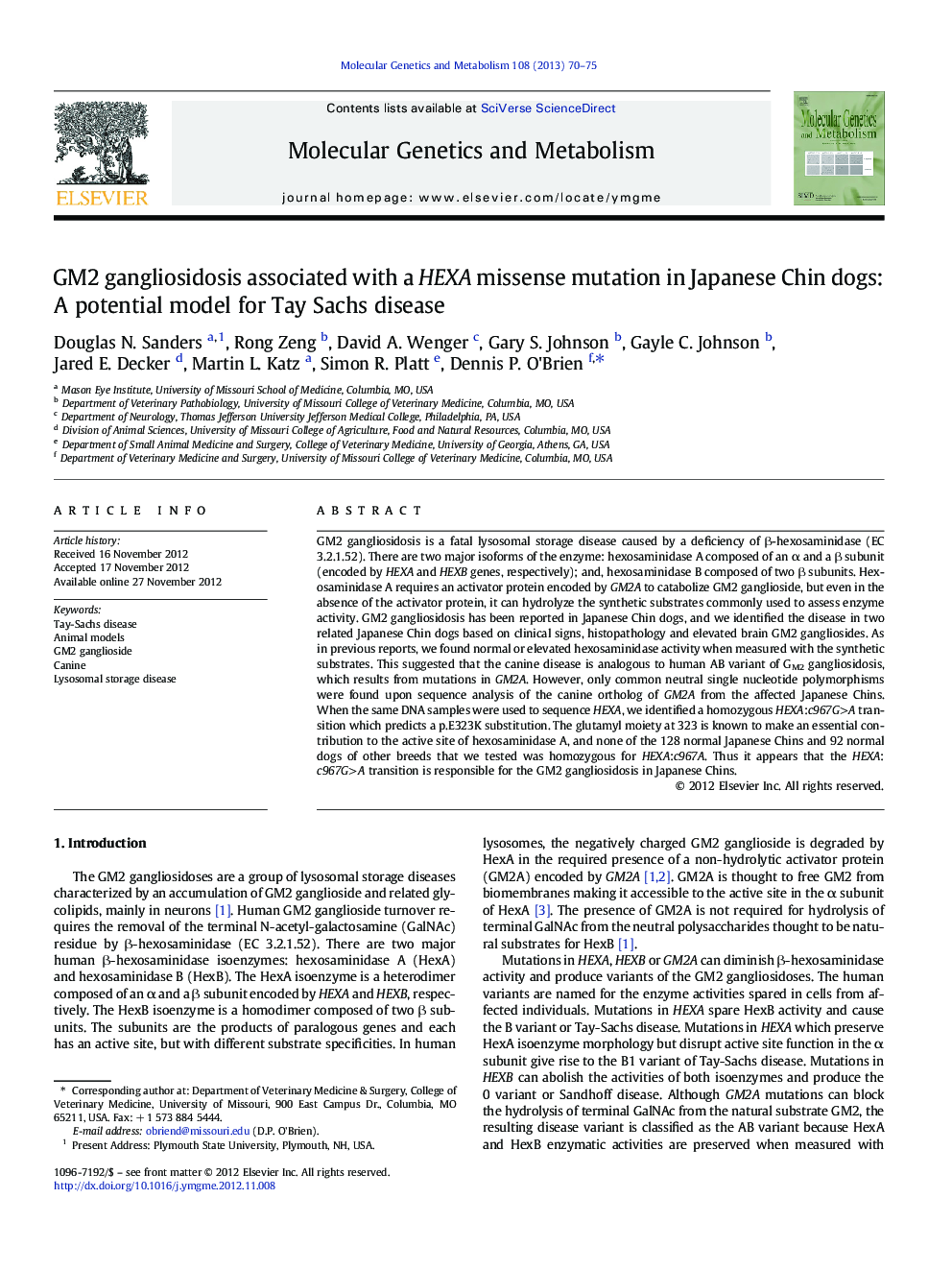| Article ID | Journal | Published Year | Pages | File Type |
|---|---|---|---|---|
| 1998725 | Molecular Genetics and Metabolism | 2013 | 6 Pages |
GM2 gangliosidosis is a fatal lysosomal storage disease caused by a deficiency of β-hexosaminidase (EC 3.2.1.52). There are two major isoforms of the enzyme: hexosaminidase A composed of an α and a β subunit (encoded by HEXA and HEXB genes, respectively); and, hexosaminidase B composed of two β subunits. Hexosaminidase A requires an activator protein encoded by GM2A to catabolize GM2 ganglioside, but even in the absence of the activator protein, it can hydrolyze the synthetic substrates commonly used to assess enzyme activity. GM2 gangliosidosis has been reported in Japanese Chin dogs, and we identified the disease in two related Japanese Chin dogs based on clinical signs, histopathology and elevated brain GM2 gangliosides. As in previous reports, we found normal or elevated hexosaminidase activity when measured with the synthetic substrates. This suggested that the canine disease is analogous to human AB variant of GM2 gangliosidosis, which results from mutations in GM2A. However, only common neutral single nucleotide polymorphisms were found upon sequence analysis of the canine ortholog of GM2A from the affected Japanese Chins. When the same DNA samples were used to sequence HEXA, we identified a homozygous HEXA:c967G>A transition which predicts a p.E323K substitution. The glutamyl moiety at 323 is known to make an essential contribution to the active site of hexosaminidase A, and none of the 128 normal Japanese Chins and 92 normal dogs of other breeds that we tested was homozygous for HEXA:c967A. Thus it appears that the HEXA:c967G>A transition is responsible for the GM2 gangliosidosis in Japanese Chins.
